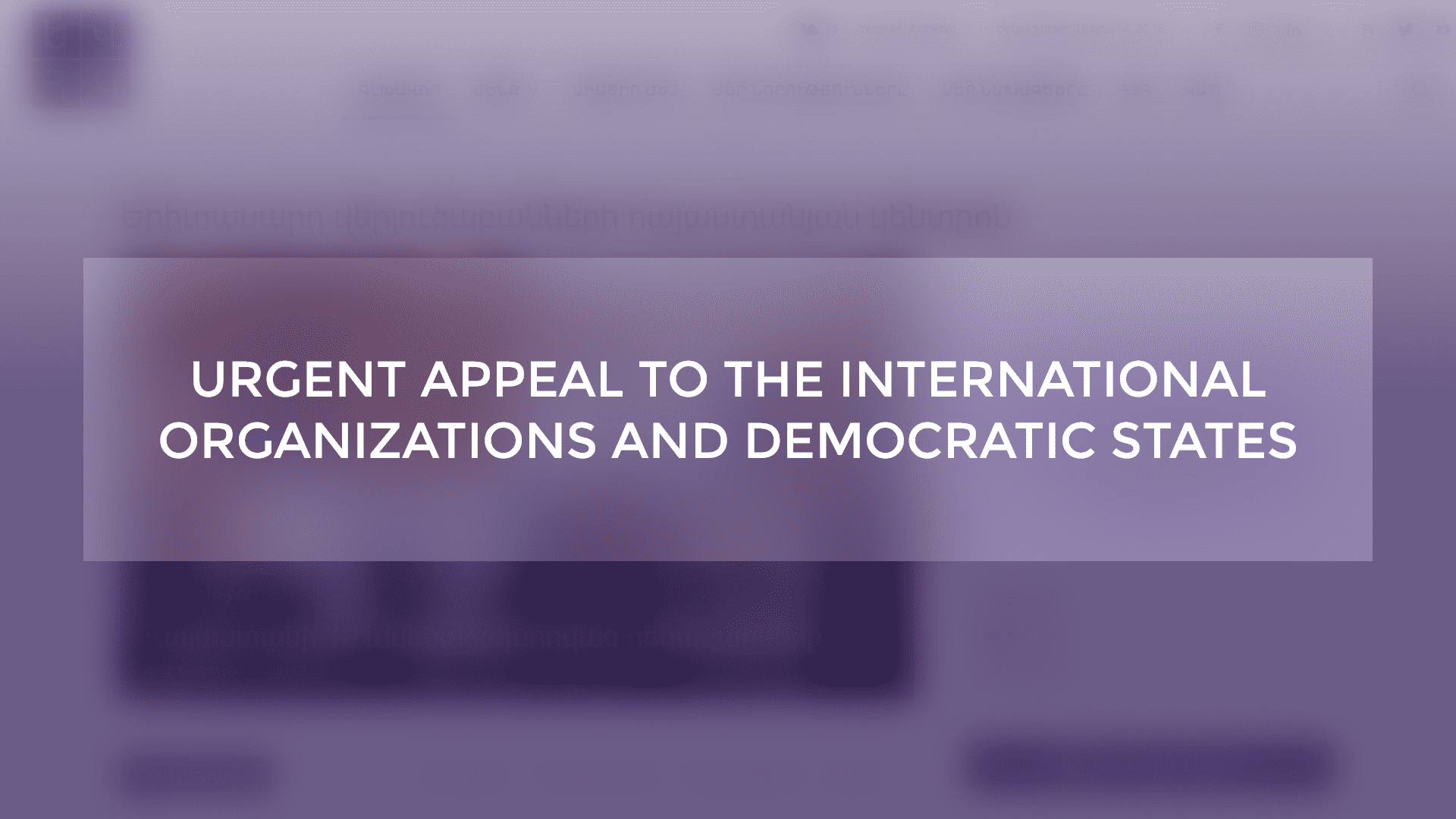We, the undersigned civil society organizations in Armenia would like to bring your attention to the political situation in Armenia that is a clear confrontation between the existing autocratic corrupt regime and the hope for democracy.
Until 2015, the Republic of Armenia had a semi-presidential governance system envisaging direct elections of the president of the country with maximum two terms of service. To maintain his power after the expiry of his two terms, President of Armenia Serzh Sargsyan changed the constitution through a largely rigged referendum held in December 2015. According to the new constitution, Armenia’s governance system changed to a parliamentary one, which provided for a stable majority of one political party in the National Assembly, eliminated direct elections of the head of state and diminished the powers of the president, transferring the major authorities to the prime minister elected by the parliamentary majority. Apparently, the new constitution was tailored to strengthen the predominant position of the ruling Republican Party of Armenia and to keep S.Sargsyan in power as a ‘super’ prime-minister with extended authorities and diminished accountability to both the parliament and the citizens. In the parliamentary elections of April 2017, which were characterized by widespread vote-buying and controlled voting as well as by the absence of a strong opposition, the Republican Party of Armenia won the majority of seats in the National Assembly and set the necessary grounds for S.Sargsyan to appear in the state leader’s role for the third time. Starting from mid-March 2018, the civil society started a campaign to oppose the possible nomination and election of Sargsyan as the prime minister to prevent the Armenia’s turn into a life-long dictatorship that became a common in former Soviet countries. The protests were commenced independently by different groups, particularly the “Civil Contract” political party, “Reject Serzh” and “Armenian State Salvation Front” civic initiatives, and quickly attracted the wide support of the Armenian people. Being dissatisfied with 10 years of governance by president S.Sargsyan, dozens of thousands of citizens of Armenia took the streets. Since April 13, for several days and nights, the protesters occupied the Square of France in center Yerevan and peacefully marched through the streets, squares and bridges, paralyzing the traffic in the city and temporarily occupying government buildings in order to influence MPs and prevent their vote in favour of the candidacy of S.Sargsyan.
On April 17th, the parliament of Armenia surrounded by police cordons, heavy riot police machinery and barbed wires elected S.Sargsyan as a new prime minister with the simple majority of open-cast votes. Tens of thousands of citizens were demonstrating outside the police cordons which employed “special means” of smoke grenades, wounding 46 people. At least 60 protesters were attacked, beaten and taken to the police since the morning and kept there until the end of the session in breech of the law on peaceful demosntrations. , It is worth to mention that this was the third time that S.Sargsyan is taking the highest position of the state in a situation of turmoil and violence of police against the peaceful demonstrations.
Following the election of S.Sargsyan in the National Assembly, the leader of Civil Contract, MP Nikol Pashinyan made a call for non-violent civic disobedience throughout the country that echoed not only in Yerevan, but also in other cities and towns, such as of Vanadzor, Gyumri, Armavir, Gavar, Hrazdan, etc. Many thousands of people launched peaceful demonstrations againt the prospect of the consolidating dictatorship. In response to the peaceful protests the Armenian police applied unproportional force and extreme violence. Within 4 days about 500 protesters, including minors, were attacked, severely beaten, taken to police departments and detained, often for more than 3 hours without investigative or judicial proceedings. Criminal charges are brought against several protesters. Many dozens of school students were beaten by police officers in civil clothes. Acts of violence also targeted journalists and attorneys.
In parallel with treating brutally against the peaceful protesters, the police demonstrated surprising tolerance towards and support to the organized criminal groups. In particular, there are cases when dozens of policemen calmly witnessed the actions of the criminal mob in the street engaged in the violence and damage of public property and disregarded multiple of cars without number plates in the streets.
It should be noted that though the civic disobedience is largely led by the oppositional political party leader, the movement is non-partisan. Its main purpose is to prevent S.Sargsyan’s third and life-long term as the leader of the country, which will leave the country in the long-term catch of dictatorship. By the recent report of Freedom House Nations in Transit: Confronting Illiberalism, already there is deterioraton of the democracy score that puts the country within the group of semi-consolidated authoritarian regimes.
Whatever happens in Armenia, it is a fight for democracy and against the corrupt regime. This burst of energy is the consequence of continuous suppression of the rights of citizens since 1995 to express their vote in free and fair elections.
It should be additionally noted that Armenian civil society organizations developed a petition with a demand for Serzh Sargsyan to step down.
International organizations and countries that promote democratic values and systems shall support the struggle of the Armenian people for a better future.
Freedom of peaceful assemblies shall be protected by the Armenian state and, particularly, its police.
Life-long dictators shall not be recognized and shall be condemned.
Civil society organizations
Transparency International Anticorruption Center
Helsinki Citizens Assembly Vanadzor
Open Society Foundations Armenia
Journalists’ Club “Asparez”
Armenian center of young analysts NGO









